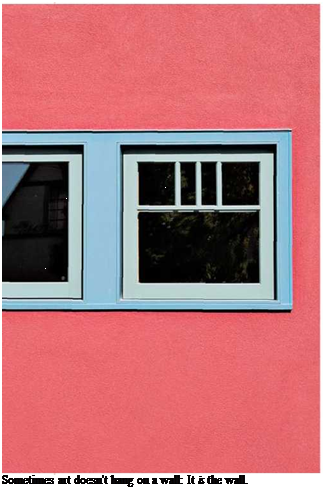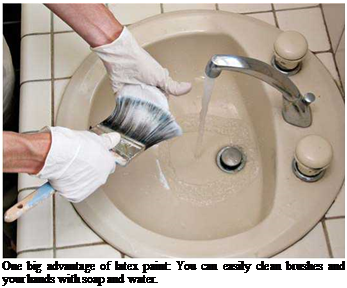Painting

Painting is probably the most popular renovation task because its effects are immediate and striking. For not much money or effort, you can get a complete change of scenery and heart. If you own a few basic tools, your costs will be limited to the few tools you’ll need to rent and the paint you choose.
This chapter covers both exterior and interior painting, including trim, doors, windows, and cabinets. For information on stripping and finishing floors, refer to Chapter 20.
If you want painted surfaces to look good and last long, the substrate—such as drywall, plaster, and wood—must be stable and dry before you start. Thus prep work (preparing surfaces) is crucial for a good paint job, vital advice that recurs in this chapter. Whether you’ll be painting a building’s interior or exterior, follow these guidelines:
► Correct structural or moisture-related problems.
► Scrape or sand down paint that’s poorly adhered or applied excessively.
► Sand surface irregularities.
► Choose primer that will adhere well and be compatible with the finish coats.
► Follow instructions on paint containers.
► Sand lightly between coats for better adhesion.
Manufacturers frequently reformulate their primers, paints, and stains, so look for a reputable supplier who keeps up with changes. Before buying paint, examine the surfaces to be painted and think about the conditions it must endure. Then ask the following questions.
► Interior or exterior paint? Beware of any container labeled "interior/exterior.” It’s probably cheap. Quality exterior paints contain additives that repel moisture, block UV rays, and discourage mold. These additives are not substances you’d want to inhale indoors while the paint is curing. Thus never use exterior paints indoors and vice versa.
► Has the surface been painted before? Surfaces should be primed if they (1) have never been painted, (2) have been extensively scraped or sanded, or (3) are "chalky” or poorly prepped. However, if existing paint is


![]()
![]() well adhered, priming isn’t necessary; just paint over the old coat.
well adhered, priming isn’t necessary; just paint over the old coat.
► What type of finish (sheen) do you want? Top-coat finishes range from flat (also called dull or matte) to semigloss (a. k.a. eggshell, velvet, satin) to gloss. Glossier finishes tend to be more durable and easier to clean, so they’re favored on doors and windows, on trim, and in high-use areas such as bathrooms and kitchens. Enamel, which dries to a hard, durable finish, is best for window sashes, doors, and casings.
► Is the surface unusual? There are specialty paints for masonry; for hard, nonporous surfaces such as tile and glass; for often-damp areas; and for nonslip surfaces. There are even paints for acoustical tile that don’t reduce the tile’s sound-deadening properties. Check with your supplier.






Leave a reply